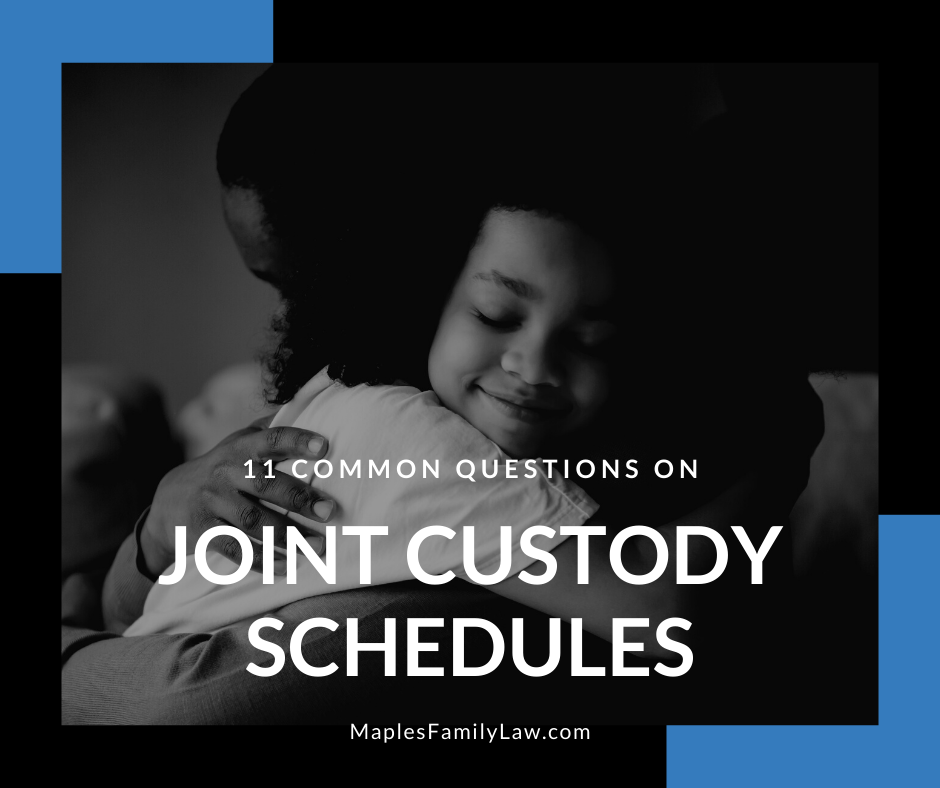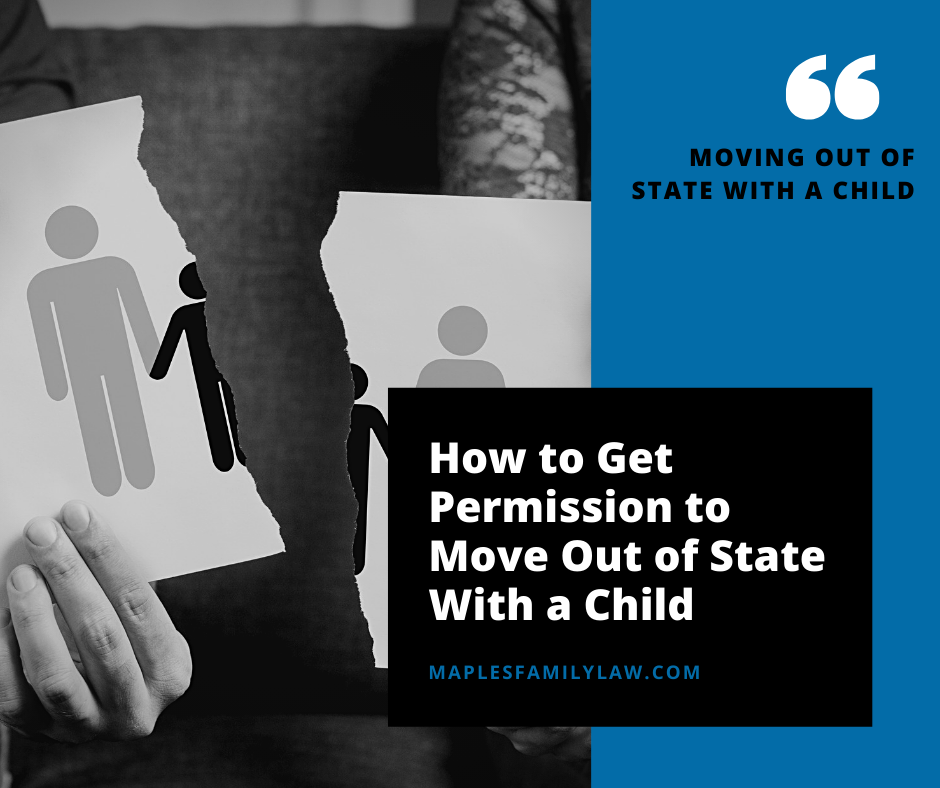
11 Common Questions About Joint Custody Schedules in California
If you’re like many people, you have plenty of questions about developing a joint custody schedule during or after divorce. Check out these joint custody schedule frequently asked questions to see if you can find an answer here – or, if you don’t see your question or need personalized legal advice, call us at 209-395-1605 to schedule a consultation with a Stockton divorce attorney.
11 Common Questions About Joint Custody Schedules in California
Check out these 11 common questions about joint custody schedules in California.
What is a Typical Joint Custody Schedule?
In California, joint custody schedules vary greatly from family to family. The courts recognize that no two families are exactly the same – and kids of various ages have different needs. Some typical joint custody schedules include: the 50-50 custody schedule, the 2-2-3 joint custody schedule, and the week-on, week-off custody schedule. Your attorney can help you understand your options if you’re sharing joint custody with your ex.
Related: What is the best interest of the child in California?
How Do I Get a Joint Custody Schedule?
When you’re going through a divorce or breakup and you’re sharing custody of your children with their other parent, you get a joint custody schedule by making one. Create your schedule with your kids’ best interests in mind; that’s what it’s going to take to get a judge to sign off on your joint custody plan. You might choose a week-on, week-off joint custody schedule if you have older children, or you might prefer the common 2-2-3 parenting schedule. You can customize your schedule to reflect your family’s unique needs, but the key is that you create something that does what’s best for your children. If the custody schedule you submit to the court isn’t something that serves your child’s best interests, the judge in your case is going to tell you to try again.
What is a 50-50 Custody Schedule?
In a 50-50 custody schedule, each parent has the children half the time. That may mean that you alternate days or weeks, or it might mean that one of you picks the kids up from school, drops them off the next morning, and then the other parent picks them up and starts the cycle over again. This way, each parent has equal time with his or her children. You can even work it out in another way – what’s most important is that it works for your family.
The custody schedule you choose should always be in your kids’ best interests, not yours. The judge assigned to your case will look carefully at the joint custody schedule you’re submitting to make sure it’s truly what’s best for your children.
Related: Child custody in California
What is a 2-2-3 Parenting Schedule?
A 2-2-3 parenting schedule is a common way that parents with joint custody of children work out times to be with them. Many parents choose this schedule because it allows ample uninterrupted time with the children, and each parent gets the kids every other weekend. The numbers in a 2-2-3 parenting schedule represent days, so let’s start with Parent A and Parent B.
Parent A has the children for the first two days of the week. Parent B takes over for the next two days, and then Parent A takes the kids for the three days (to include the weekend). Then, it’s Parent B’s turn to get the kids for two days. Parent A gets the kids back on the second two-day group, and then Parent B takes the kids for three-day weekend. The schedule just keeps going back and forth in this way so that both parents enjoy weekend and weekday time with the children. It’s not right for every family, such as those who live far apart or who have very young children who are used to one parent being the primary caregiver, but it can be a great solution for people who live close to each other with older children.
What is the Best Custody Arrangement?
Some parents argue that the best custody arrangement is the 2-2-3 parenting schedule, the 50-50 parenting schedule, or something else entirely – but it doesn’t matter what some parents think. What matters is what’s the best custody arrangement for your children. The state of California recognizes that kids benefit most from frequent and continuing contact with both of their parents, but what that looks like is up to you and your children’s other parent.
If you have young children, the best custody arrangement might be one in which the kids stay in one home throughout the week and visit the other parent’s home on a few evenings or for some time on weekends. Older kids might prefer the 2-2-3 parenting schedule, or even the week-on, week-off joint custody schedule. When you’re putting together your parenting plan, think about what’s going to be easiest on your children. If they’re in sports, for example, it might make sense for them to stay in one home throughout the week and spend weekends with their other parent. The bottom line is that every family is different, so every joint custody schedule should look a little different.
Related: Infant custody laws
What’s the Difference Between Shared and Joint Custody?
In California, shared and joint custody are the same thing. In other states, the terms vary – and there are big differences between shared and joint custody. However, in California, you can say that you have shared custody or joint custody; both still mean that you and your children’s other parent share the rights and responsibilities of making decisions for your kids, or that you share physical time with the children (or both).
There are two types of custody in California: legal and physical. Legal custody refers to your rights and obligations, particularly when it comes to deciding where the kids will live, where they’ll go to school, what types of routine medical treatment they’ll get, and other things that impact their welfare. Physical custody refers to where the children live.
With joint or shared legal custody, both parents share the responsibility for deciding where the kids will live, as well as making decisions about their health, well-being and education. With joint or shared physical custody, the children live with both parents.
How Can I Get Custody Without Going to Court?
You can get custody of your children without going to court – for the most part. You and your children’s other parent can come up with a custody agreement between yourselves. You will have to go to court (unless your attorney can go on your behalf) to get the judge to sign off on it – and when that happens, it becomes a legally binding court order. The only way to really get custody without going to court is by reaching an agreement with your spouse; you must both agree, and the custody plan you come up with must serve your children’s best interests.
What Does a 70/30 Custody Schedule Look Like?
A 70/30 custody schedule looks like this: A child spends 70 percent of his or her time in the care of one parent, and 30 percent of his or her time with the other. Really, it works out to spending two nights out of seven with one parent (and the other five with the other parent).
Here’s what a 70/30 custody schedule looks like on paper:
| Monday | Tuesday | Wednesday | Thursday | Friday | Saturday | Sunday | |
| Week 1 | Parent A | Parent A | Parent B | Parent A | Parent A | Parent A | Parent B |
| Week 2 | Parent A | Parent A | Parent B | Parent A | Parent A | Parent B | Parent A |
Naturally, you can modify this schedule so it works out for your family; maybe different days of the week are better.
Why is Shared Custody the Best Arrangement?
Shared custody is the best arrangement – for some families. It’s not best for every family. However, for families who are able to have shared custody, they consider it the best arrangement because it allows children to have frequent and continuing contact with both parents.
Some families aren’t cut out for shared custody, such as those that have had domestic violence issues in the past. When one parent lives too far away, or when the parents aren’t amenable to each other, shared custody can cause more problems than it’s worth.
Related: Parenting time agreements in California
How Many Days is 70/30 Custody?
Usually, 70/30 custody works out to being five days with one parent and two days with the other. The days can vary week by week, based on what’s right for your family.
What is a Reasonable Visitation Schedule?
A reasonable visitation schedule is one that allows the children frequent and continuing contact with both parents. The state of California recognizes that this is essential for kids, so whenever possible, a parenting plan or parenting time agreement should allow for both parents to spend plenty of time with the children.
Every family is different, though, and what your family finds to be a reasonable visitation schedule might not work for another family. The key to settling on something reasonable is working with your children’s other parent to create the best joint custody schedule for your needs. When you both have a hand in creating it, you’re both more likely to feel that it’s reasonable – and you’re more likely to want to stick to it.
How Far Can I Move With Shared Custody in California?
When you have shared custody, you can move – usually up to 45 to 50 miles away – provided that you have agreement from your children’s other parent. If your kids’ other parent doesn’t agree with you moving, you’ll have to show the court that the move is in your children’s best interest. The court can say no, so be prepared. However, that doesn’t mean you personally can’t move; you may simply have to move without your children.
Related: How to get permission to move out of state with a child
Do You Need to Talk to a Lawyer About Creating or Changing a Joint Custody Schedule?
If you’re divorcing and need to create a joint custody schedule, or if you’re thinking about moving away because it’s what’s best for your family, we may be able to help you. Call us at 209-395-1605 to schedule a free consultation with a Stockton divorce attorney who understands the complexities of joint custody schedules, legal and physical custody, and other divorce-related matters today.

